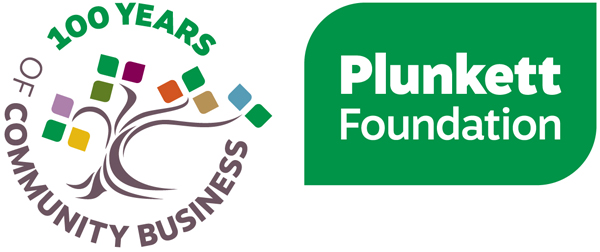Like two different football clubs in one great city, for years charities and co-operatives would have relatively little to do with each other.
For the charity sector, co-ops are business clubs focused on private gain – values-based, open and entrepreneurial. That is seen as in contrast with a wider public purpose – indeed charity law tends to test public benefit negatively, through the absence of private benefit.
For the co-operative sector, philanthropy is about the public works of private people – generous with their time and money, prosperous, often establishment. That is seen as in contrast with the working class roots of the self-help movement – participatory and emerging out of need.
Each probably think the other is in some way the status quo – charities representing a more traditional, paternalistic approach to service delivery, co-operatives being part of markets that still leave people in need.
In reality, each has always aimed higher, at transforming society through values.
Close your eyes and image you are in society 100 years ago. Open your eyes and you would find little democracy, few employment rights, no votes for women and widespread racism. These most significant changes to our lives have been led by civil society, both charitable and co-operative. Politics rides and shapes the waves. But it rarely, in terms of state action, changes the tide. At our best, we both do that.
I have been involved in both these parts of civil society all my life. I work at Co-ops UK now and in July, I will take up a new role as CEO of Pilotlight, a social enterprise that provides support for small charities in partnership with business.
At our best, we are the free organisation of individuals around issues of need and of passion. This is what generates and regenerates the values that holds society together and takes it forward. When Harvey Weinstein describes himself as a dinosaur, there is an underlying truth. Technology changes, fashions change and you have to keep up. But values change, if you don’t fit, you will be found out.
I joined as an individual member of The Co-op when I left school. I was elected to the board of a national charity when I was twenty three.
In the 1990s, when I was Chief Executive of the charity, the New Economics Foundation, we launched a programme called Values-Based Organisation. Led by Simon Zadek, a profound thinker, the challenge as we saw it was that the reference points for learning in civil society were the wrong ones. Management thinking at the time was all and only about business structure and business strategy in the private sector.
Interestingly, one of the tools we helped to develop through this programme – social auditing – became in time part of triple bottom line accounting, reimported as learning into the world of business through the lens of corporate social responsibility.
So, where are the current intersections and opportunities for co-ops and charities to learn from each other?
Intersection 1: Open Membership

Co-operatives are all about membership. Co-ops are businesses owned by those involved in the business, called members to distinguish them from the more distant investors that own shareholder companies.
Co-ops themselves can be formed under any corporate form, so it is not unlike the diverse legal mix open to charities. You just have to set the articles or rules for open membership, in line with international co-operative principles.
A huge swathe of charities too are based on membership. In the disability field, over many years, membership has been a practical tool in the move away from a tradition of paternalism, acting ‘for’ people with disabilities, to a culture of participation, in which action is led by people with disabilities.
In England and Wales, the Charity Commission estimates that are around 80,000 charities that have a membership structure. There will be uncounted thousands more in the low-flying heroes of the UK’s community sector, often unincorporated associations where participation is based on a presumption of equality. Think too of churches, trade unions, sports clubs, building societies and membership associations…
So, how many members of this form are there in the UK?
My estimate has been a minimum of 91 million members: more members than people in the UK, because enough of us are members many times over. But still, this is a dramatic number. It is ten times the number of individual shareholders in the UK. Can we imagine the television news, where member ups and downs were treated with the same profile and respect as stocks and shares?
But it varies, of course. There are many forms of association. Some are one-way models only. Having a loyalty card for a coffee chain gives you no voice. Being a friend of a museum gives you no vote.
Good membership is a two-way relationship between an individual and an institution, with purpose at its heart (see for example research of the New Citizenship Project).
But membership is changing:
- Grassroots, participatory membership has been pushed out by a shift towards consolidation in the charity sector. Scale can erode membership as norms of expertise and professionalism override those of participation and accountability.
- Conversely, there has been a rise in membership models over the last twenty years around key public services in the cause of ‘co-production’ – mental health trusts are a rather good example, acute health trusts a rather poor one.
What membership can do well is to answer the question ‘who are you accountable to?’.
For housing associations for example, the answer to this accountability test has never been sure and simple. It is a successful field but a world to itself, never quite sure whether its reference points are to charity, to co-operatives or to business. Social housing has grown to scale, but rarely has it been a confident voice for its tenants, let alone a platform for their self-organising.
The accountability test is also one that charities with no members to speak of can also struggle with. At its heart, perhaps, this is a tension between stakeholder models, where accountability comes through participation, and wider causes, where no-one can fully represent the purpose at hand. If your concerns go beyond people, for example – faith, the natural environment, other species – then accountability to people may never be enough.
Acting in trust without the complexities of wider accountability (beyond law and regulation that is) can be a way to entrench an enduring purpose over time. But I suspect that it can be harder to ensure that there is periodic renewal.
Charity is associated in the public mind with the call for new money. Yet there are billions of pounds of charitable assets that lie dead and dormant rather than being used to challenge and change society: beautiful paintings; wonderful halls in city centres; legacy foundations administered by banks and accountants. I am told that one penny in every pound traded on the stock exchange is on behalf of the charitable sector.
Yet of course, when it comes to accountability, mutual membership – particularly passive, mass consumer membership – doesn’t always do better. The old saying about building society managers was that their job was easy – borrow at 1 per cent, lend at 2 and be at golf by 3. This was before the shock of demutualisation…
The challenge of accountability and renewal is why governance matters.
Intersection 2: Participatory Governance

In both the charity and co-operative sectors, there have been high profile governance failures and scandals. And there are similar efforts in both to drive up quality.
Co-ops UK hosts a Co-operative Governance Expert Reference Panel. We operate a governance code updated from the start of this year and produce a range of governance support tools, from how to design democratic process where you need Boards with a balance of expertise, gender equality, work on conflict, values and culture, training and development as well as a range of templates for the use of Boards.
Our view of good governance is summarised in a Co-operative Governance Wheel that I helped to introduce. It is a one page reference point for good practice.

One of the great innovations in the co-op sector recent years, thanks in part to solicitors such as Anthony Collins, has been the development of a robust model of what we might call a ‘multi-stakeholder’ governance. If you are a worker co-operative, what about the customers? If you are customer-owned co-op, what about the workers? The multi-stakeholder model, still one member, one vote but within weighted constituencies, operates as a 360 degree co-operative.
In Wales, one of the leading social care charities, Cartrefi Cymru, has converted to a multi-stakeholder charitable co-op, because giving a voice to users, people with learning disabilities, carers and to staff can give them back their dignity. As Adrian Roper, Chief Executive of Cartrefi Cymru says, decrying the marketisation of care based on competition and a race to the bottom:
“if you feel that behaving like rats in a sack is a deeply inappropriate and resource-wasting way for social care providers to act, and you see no evidence that charitable status is any guard against rat-like behaviour, then co-operative principle 6 (co-operation amongst co-operatives) calls to your soul.”
In Italy, this model – multi-stakeholder social co-operatives providing care, health and employment services – has grown from 650 in 1985 to seven thousand today, with 244,000 staff and 35,000 volunteers.
Even so, where you have the self-selecting governance model of many charities – trustees of today choose the trustees of tomorrow – that doesn’t mean that they are necessarily cut off from wider stakeholders. LSE Professor Howard Glennister once suggested that the distinctive nature of voluntary organisations is their ambiguity – meaning that people can play different roles, including as trustees.
Naturally, this includes volunteers. In the most professionalised charities, the trustees are the only true volunteers left. But more widely, as some excellent recent NCVO research shows, volunteering still plays a foundational role in the participatory life of the nation. Seven in ten people have volunteered at some point in their lives.

Combining voluntary and paid efforts is an art and some, like the National Trust, do it brilliantly. At the intersection of co-ops and charities is the Plunkett Foundation. This is a specialist charity, 100 years old this year, that supports rural co-ops. Typically, these combine paid and volunteer staff in the context of a commercial business, with around 800,000 volunteer hours each year.
There are close to 350 community shops across the UK, supported by Plunkett, serving 1,400 remote rural communities. The long-run survival rate for these – part of a wider array of over 9,000 community businesses according to Power to Change – is outstanding given that all but a few were shops threatened with outright closure when local people took them on. After thirty years, only five per cent are not still running today.
Part of that success can be put down to the commitment of those involved, which is not just their time but also their money.
Intersection 3: Social Investment
Alongside membership and governance, the third area of intersection between charities and co-operatives is money. Here, the point of learning is not about traditional forms of giving but new ones, blending the motivation of donors and investors in a genuine form of social investment.
Here the community benefit society model has been a ‘game changer’ in that it is a model that encourages communities of people to come together to support charitable projects, through their time and fiscal investment, on a democratic one-member one vote basis. This uses traditional co-operative models of equity capital raising from members in a new setting, called ‘community shares’. Over the last decade, around 150,000 people have co-invested over £150 million in over 500 community businesses through this approach.
Equity like this is what most social ventures need – patient over time, asset-locked equity capital that can be crowd-funded from your supporters. It is not a pushing of expensive short-term debt, which is sadly what a fair amount of social investment passes for.
As a member, you don’t see capital gains and your money is at risk, but you can be paid interest on your investment and you benefit as a member from the success of the society – whether it is Equal Care Co-op, developing social care solutions, or Awel Aman Tawe, spreading solar power across Wales.
Again there are hybrids. The charitable community benefit society model has been used widely by communities that are looking to conserve heritage assets. This week, we have launched an offer of £600,000 of equity match funding for community businesses running heritage projects. This is through the Community Shares Booster programme, set up in partnership with Locality and Power to Change and now the Architectural Heritage Fund.

Creating or converting to a charitable community benefit society is becoming a real choice for a wide range of initiatives including local examples here where I work in Manchester: Projekts MCR, Ancoats Dispensary and Stretford Public Hall.
Conclusion – learning fast
Civil society is a big values-based tent and within it, there is ample scope to work with each other and scope to learn from each other. Our core traditions still stand apart from the dominant ideologies both of state-led and of market-led power. So I suggest that:
- Charities can learn from the best of co-operatives how to make a virtue of accountability via open membership.
- Co-operatives can learn from the best of charities how to make a virtue of purpose via open participation.
- The best of both are champions of an increased voice for users, communities, workers and volunteers.
- More widely, we have both something to teach the wider world of business, as well as something to learn.
And this is our shared condition. In a world of need, risk and opportunity, we all have to learn fast if we are to succeed.”




